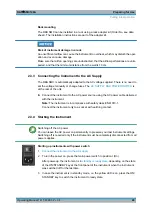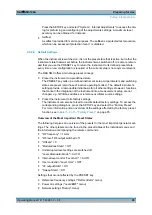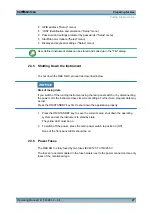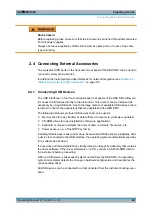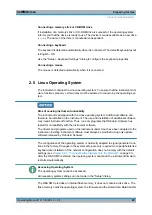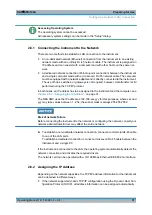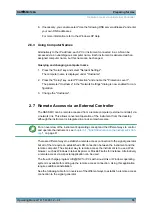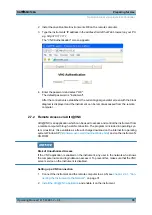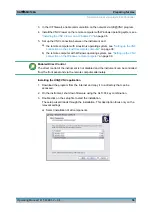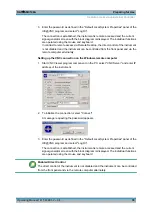
Preparing for Use
R&S
®
SMC100A
28
Operating Manual 1411.4060.32 ─ 04
Shock hazard
Before replacing a fuse, make sure that the instrument is switched off and disconnected
from all power supplies.
Always use fuses supplied by Rohde & Schwarz as spare parts, or fuses of the same
type and rating.
2.4 Connecting External Accessories
The equivalent USB ports on the front and/or rear panel of the R&S SMC can be used to
connect a variety of accessories.
In addition the instrument provides interfaces for network integration (see
"Setting Up a Network (LAN) Connection"
2.4.1 Connecting USB Devices
The USB interfaces on the front and (optionally) rear panels of the R&S SMC allow you
to connect USB devices directly to the instrument. This number can be increased as
necessary by using USB hubs. Due to the large number of available USB devices, there
is almost no limit to the expansions that are possible with the R&S SMC.
The following list shows various USB devices that can be useful:
●
Memory stick for easy transfer of data to/from a computer (e.g. firmware updates)
●
CD-ROM drives for easy installation of firmware applications
●
Keyboard or mouse to simplify the entry of data, comments, file names, etc.
●
Power sensors, e.g. of the NRP Zxy family
Installing USB devices is easy under Linux, because all USB devices are plug&play. After
a device is connected to the USB interface, the operating system automatically searches
for a suitable device driver.
If Linux does not find a suitable driver, it will prompt you to specify a directory that contains
the driver software. If the driver software is on a CD, connect a USB CD-ROM drive to
the instrument before proceeding.
When a USB device is subsequently disconnected from the R&S SMC, the operating
system immediately detects the change in hardware configuration and deactivates the
corresponding driver.
All USB devices can be connected to or disconnected from the instrument during oper-
ation.
Connecting External Accessories











